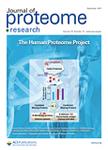版权所有:内蒙古大学图书馆 技术提供:维普资讯• 智图
内蒙古自治区呼和浩特市赛罕区大学西街235号 邮编: 010021

作者机构:Dartmouth Hitchcock Med Ctr Norris Cotton Canc Ctr Lebanon NH 03756 USA Geisel Sch Med Dartmouth Dept Genet Lebanon NH 03756 USA Geisel Sch Med Dartmouth Dept Biochem Lebanon NH 03756 USA
出 版 物:《JOURNAL OF PROTEOME RESEARCH》 (蛋白质组研究杂志)
年 卷 期:2012年第11卷第7期
页 面:3581-3591页
核心收录:
学科分类:0710[理学-生物学] 071010[理学-生物化学与分子生物学] 081704[工学-应用化学] 07[理学] 08[工学] 0817[工学-化学工程与技术]
基 金:National Institutes of Health from the IDeA Program of the National Center for Research Resources [P20-RR018787] National Cancer Institute [R01-CA155260] National Institute of General Medical Sciences [T32-GM008704]
主 题:search algorithm peptide spectral matching graphical processing unit GPU tandem mass spectrometry peptide identification
摘 要:Modern mass spectrometers are now capable of producing hundreds of thousands of tandem (MS/MS) spectra per experiment, making the translation of these fragmentation spectra into peptide matches a common bottleneck in proteomics research. When coupled with experimental designs that enrich for post-translational modifications such as phosphorylation and/or include isotopically labeled amino acids for quantification, additional burdens are placed on this computational infrastructure by shotgun sequencing. To address this issue, we have developed a new database searching program that utilizes the massively parallel compute capabilities of a graphical processing unit (GPU) to produce peptide spectral matches in a very high throughput fashion. Our program, named Tempest, combines efficient database digestion and MS/MS spectral indexing on a CPU with fast similarity scoring on a GPU. In our implementation, the entire similarity score, including the generation of full theoretical peptide candidate fragmentation spectra and its comparison to experimental spectra, is conducted on the GPU. Although Tempest uses the classical SEQUEST XCorr score as a primary metric for evaluating similarity for spectra collected at unit resolution, we have developed a new Accelerated Score for MS/MS spectra collected at high resolution that is based on a computationally inexpensive dot product but exhibits scoring accuracy similar to that of the classical XCorr. In our experience, Tempest provides compute-cluster level performance in an affordable desktop computer.